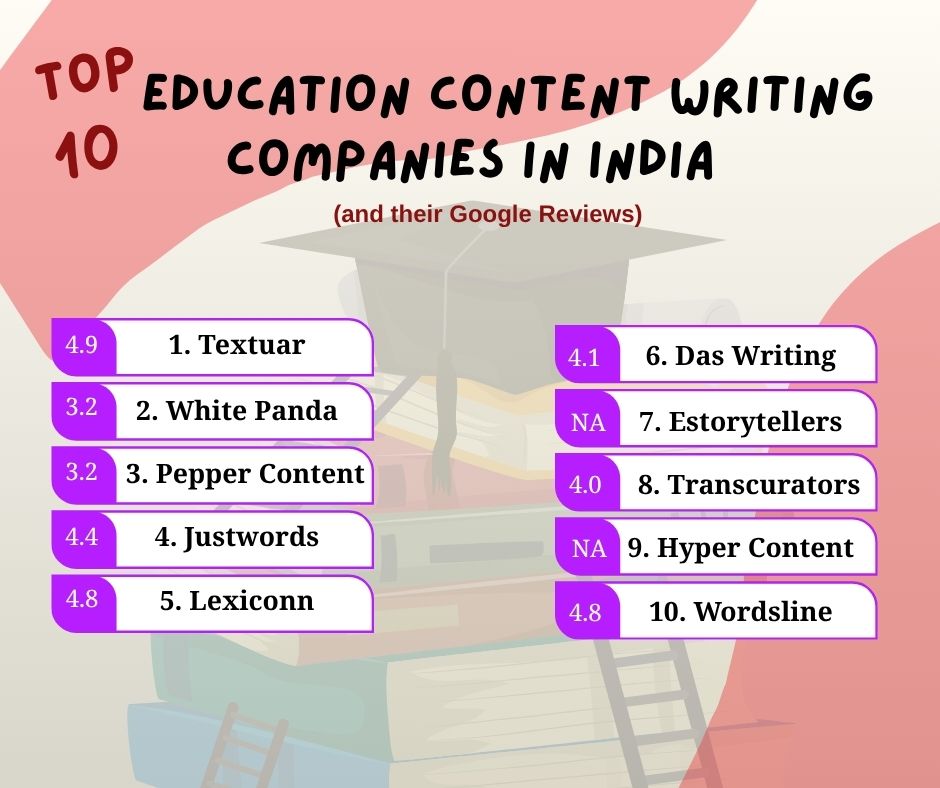For many, SEO, keywords, and keyword density seems to be a complicated topic. This could be because of the various methods that go in an SEO campaign. Be it off-page SEO or keyword research, a digital marketing strategy is simply incomplete without factoring in SEO.
Irrespective of the technique used, one thing is crucial. You simply cannot hope to stuff keywords and hope to receive the qualified traffic you are looking for.

Why Keywords Are Important in SEO?
[1] How Search Engines Use Keywords
Search engines operate as intelligent detectives. They first send crawlers to fetch your content. Then, these crawlers attempt to learn what your page is about. Keywords assist them in determining this rapidly.
You can visualize these crawlers as context decoders. When they come across “pizza recipe” repeated, they realize your page assists individuals in making pizza. But they also consider connected words such as “dough,” “cheese,” and “oven.” It provides them with the full context of your content.
[2] Keywords Equal User Intent Signals
Humans type certain words when they look online. For example, a person looking for “best laptops 2025” desires purchase guidance. In contrast, a person entering “how to repair laptop” requires repair assistance for their laptops.
Keep in mind that keywords bridge the gaps between user searches and your solutions. Hence, utilizing the appropriate keywords informs Google that your content is what people are seeking. This also assists your pages in being returned for related searches.
[3] Beyond Rankings: Increasing Content Relevance and UX
You must realize that keywords serve purposes beyond ranking. First, keywords help people read your content more easily. Moreover, keywords enhance user experience by establishing appropriate expectations.
For instance, a title that contains obvious keywords enables users to understand what they will be learning further in the blog. Additionally, keywords in headings allow the content to be scanned more easily. As a result, individuals remain longer on your site and get what they’re looking for quicker.
What You Need to Know about Keyword Density?
[1] What is Keyword Density?
Keyword density is basic arithmetic. It indicates the frequency at which your key keyword occurs versus total words. The formula is:
(Number of keywords ÷ Total words) × 100.
Suppose you are writing 1,000 words and you are using your keyword 15 times. Divide 15 by 1,000 first to find 0.015. Then multiply by 100 to find 1.5% density. This indicates that 1.5% of your text is your key keyword.
[2] The Flawed Obsession
Most writers believe that more density always translates into higher rankings. This belief is incorrect and dangerous. You must realize that Google cares more about these aspects than the number of keywords:
- Search intent,
- Targeting topics,
- Content quality, and
- Overall relevance
Some writers become fixated on having exact percentages. What this does, more often than not, is cause writers to sound like machines and less beneficial. Instead of focusing on the figures, write organically for your readers.
[3] How Crawlers Analyze Keywords Today
Nowadays, search engines use advanced technology. First, they know about synonyms and related words. Second, they interpret the general meaning of your content. This is a semantic analysis.
Google’s BERT update also revolutionized everything. Today, the search engine comprehends context much more. For example, it recognizes that “a bank” can be a financial institution or a riverbank. Thus, words around it contribute to the right interpretation.
[4] Typical Density Errors to Evade
Most content writers commit the same density errors over and over.
-They concentrate on key phrases alone but not associated phrases.
-They allocate keywords in a skewed manner across their content.
-The writers tend to overlook keyword variations and synonyms.
– They often disregard user search behavior. For instance, users may search for “SEO tips” but also “search engine optimization tips.”
The ideal scenario in 2025 would be to incorporate both terms organically in your content.
The “Ideal” Keyword Density: Myths vs. Reality
[1] The Obsolete “Golden Rule”
For a long time, SEO professionals stated that 1-3% density was ideal. But this guideline never had any evidence behind it. Also, Google never officially supported any percentage.
The myth arose because it made sense. It was assumed that more keywords resulted in higher rankings. Sadly, this topped in keyword stuffing and horrible user experiences.
[2] New Benchmarks: Evidence-Based Data
New research indicates various types of content require varying strategies. Here’s what number-one pages actually do:
| Content Type | Ideal Keyword Density Range | Why This Range Works |
| Product Pages | 1-2% | Focuses tightly on specific items; less room for keyword dilution with other topics. |
| Long-Form Guides | 0.8-1.5% | Covers topics deeply; naturally includes many related terms and synonyms. |
| News Articles | 0.5-1% | Prioritizes freshness and speed over keyword repetition; benefits from social signals. |
[i] Product pages have a typical density of 1-2%. This is viable since product pages are centered around particular products. Additionally, there is less space for keyword dilution with other subject matter.
[ii] Long-form guides usually come at 0.8-1.5%. These long articles dive deep into subjects. As such, they inevitably consist of numerous associated terms and synonyms.
[iii] News articles usually have 0.5-1% density. Breaking news prioritizes newness over the repetition of keywords. Furthermore, news content is shared rapidly, increasing rankings with social signals.
[3] What are the Industry-Specific Trends in Keyword Density
Each industry reflects particular keyword density trends. For example, medical content often has lower densities due to the intricacy of medical language. While retail content usually has higher keyword densities. This is because it contains a lot of product-related terms.
Legal content tends to record low-density levels. This is due to the fact that legal writing requires precision over-optimization. Financial content follows similar trends. This is because of compliance rules and the need to build trust.
Tech content is very varied based on audience level. Tech content targeted at beginners uses higher densities for more readable content. High-level expert content but relies more on technical vocabulary than on redundant keywords.
[4] Critical Factors Influencing Your Target Audience
There are some factors influencing your optimal keyword density. First, competition level is very important. Competitive keywords tend to require more semantic depth in order to rank.
Depth of content also comes into play. Longer content is able to sustain more density naturally. However, shorter content needs to apply keywords more conservatively to prevent stuffing.
Furthermore, keyword difficulty comes into play. Simple keywords may rank with lower density. At the same time, tough keywords require in-depth coverage and flawless optimization.
[1] What Constitutes Stuffing?
Keyword stuffing occurs when you cram keywords in unnaturally. For instance: “Buy affordable laptops online. Affordable laptops for sale. Affordable laptops available now.” This is unnatural and unhelpful.
Google has defined stuffing as the unnatural, deceptive, or manipulative use of keywords. Further, the search engine can recognize these patterns by itself. So, stuffed content tends to be punished within no time.
[2] Red Flags Depicting that You are Over-Optimizing
A few red flags signal too much keyword usage. First, high density without compelling justification sends warning signals. Second, keyword-forced and unseemly phrasing is a bad sign.
Grammar checkers such as Grammarly tend to alert to over-optimized copy. Then, if it sounds unnatural when read out loud, you’ve gone overboard. In the end, feedback from your readers on clunky phrasing indicates optimization issues.
[3] How to Test for Natural Keyword Flow
Testing your content doesn’t help prevent stuffing issues prior to posting. Read your content out loud to look for natural flow. If keywords sound repetitive or forced, decrease their utilization right away.
Make someone read your content without knowing your target keyword. Then, ask them to predict what you are writing about. If they can guess the subject matter, your keywords naturally work. But if they cite forced repetition, you must rethink your strategy.
Finally, check user engagement signals after publishing. High bounce rates or short time-on-page metrics might indicate over-optimization problems. Additionally, comments about confusing or repetitive content suggest keyword stuffing issues.
[4] Consequences of Keyword Stuffing
Google punishes keyword stuffing in several ways. First, algorithmic filters can lower your rankings automatically. Second, manual reviewers might apply penalties to your entire site.
The most common result is losing organic traffic. Also, recovery from penalties can be a few months of hard work. Therefore, it’s advisable to avoid stuffing in the first place.
How Do I Know If I Am Stuffing Keywords?
When you are focused on using a specific phrase throughout your content, you tend to use it far more than you intended to, and that is absolutely natural. Use online tools like a Keyword density calculator to be able to determine the keyword density of your content.
As healthy practice, try to go for keyword density of anywhere between 1.5-3%.
The best places to place your keywords are:
- The Permalink
- H1 Tag
- H2 Tag
- Start of the Article
- End of the Article
- Adding high-quality images and using target keywords as anchor texts
Strategic Keyword Optimization in 2025: Moving Beyond Density
[1] User Intent Alignment
The important thing you should keep in mind is that different search queries have different purposes. Informational inquiries ask for knowledge and answers. At the same time, transactional inquiries reflect buy-ready users.
Match your keywords to user intent carefully. For instance, “how to” keywords work for informational content. Meanwhile, “best” or “review” keywords suit commercial content. Additionally, “buy” or “discount” keywords target transactional searches.
[2] Semantic Richness Tactics
Modern SEO requires semantic richness over keyword repetition. This means using related terms and synonyms throughout your content. For example, an article about “SEO tools” might also mention “optimization software” and “ranking trackers.”
Topic clusters are more effective than individual keywords. Make sure you write content based on themes instead of particular terms. In addition, connect related articles to establish topical authority. This will assist Google in better comprehending your expertise.
[3] Placement Over Frequency
The location of keywords matters more than their frequency. Priority spaces include page titles, headings, and the initial 100 words. Additionally, image alt text and meta descriptions are important placement areas.
But don’t stuff keywords into these positions artificially. First, write useful content and then optimize key positions. Further, ensure that keyword positioning makes reading easier instead of worse.
[4] Patterns of Keyword Distribution
Intelligent keyword distribution adopts the inverted pyramid style. Make sure you place your primary keyword in the introduction. Next, taper usage while adding related terms in the subsequent middle sections. Reinforce your primary keyword in your conclusion organically.
Avoid grouping all keywords into a single paragraph or segment. Rather, distribute them at regular intervals across your whole content piece. Additionally, employ a constant keyword frequency without creating observable optimization patterns. In addition, mix primary keywords with secondary and long-tail variations to cover everything.
[5] Voice Search and Conversational Keywords
Voice search is growing annually in leaps and bounds. Humans speak differently from how they write. Consequently, conversational keywords are increasingly becoming crucial to SEO success.
Instead of “keyword density formula,” people may ask, “How do I calculate keyword density?” Optimize on these natural phrases in addition to classic keywords. FAQ sections also assist in capturing voice search traffic efficiently.
Who Can Benefit from Effective Keyword Usage?
[1] SEO-Optimized Blogs and Article Writers
Blogs and articles gain higher topical authority through strategic keyword positioning. Continuously optimized related posts create expertise signals. Additionally, good keyword placement makes related content more accessible to readers.
[2] E-Commerce Stores
Online stores benefit from better product visibility using clever keyword practices. Product pages that have organic keyword embedding rank higher. Additionally, category pages are also enhanced by semantic keyword clustering.
[3] Local Businesses
Local companies win “near me” searches with location-based keywords. Furthermore, service terms drive local customers. Review terms also drive local traffic well.
Tools to Measure and Optimize Without Being a Freak
Free tools offer simple keyword density checks. Real-time optimization advice comes from Yoast SEO. The Hemingway App also helps you optimize your text for keywords while maintaining readability.
Paid tools provide more sophisticated features for serious marketers. SurferSEO reviews top competitive rivals on autopilot. MarketMuse offers semantic keyword suggestions. Frase also provides search intent content optimization.
What is the Future of Keywords in the Age of AI, Intent, and Beyond?
[1] AI Content Systems
Applications such as ChatGPT favor semantic coherence over keyword density. These systems naturally understand context and meaning. Due to this, copy that appears to be written by humans is more effective compared to over-optimized copy.
AI can help with content improvement and keyword research. Nevertheless, it should not replace human judgment in matters of user needs. Furthermore, Google algorithms can identify AI-generated content that brings no actual value.
[2] EEAT Focus
Google increasingly emphasizes Experience, Expertise, Authoritativeness, and Trustworthiness. The optimal keyword density is less significant than these. So, concentrate on producing truly valuable content that gives expression to your authority. Thus, keyword optimization must complement but not supplant quality content creation.
[3] Search Intent Alignment
Google’s algorithm prefers content that matches search intent. Your keywords need to focus on this important ranking signal. The right keywords can help differentiate between transactional and commercial search intent. It will also help the content writer to create semantic variations while maintaining context of the content.
Another important intersection of keywords with search intent is the use of long-tail keywords. You need to go for in-depth content that fully answers queries for:
-Answer Engine Optimization (rich snippets and knowledge panels) and
-Generative Engine Optimization (responses given by ChatGPT or Gemini)
To conclude: Context Trumps Density
Keyword density is one of the necessary elements of SEO success. It is not the solution to ranking issues; instead, it is an indicator of proper optimization. So, utilize density as a helpful guideline but not a principle.
Smart content writers strike a balance between readability and optimization. They know that keywords ought to aid, rather than overwhelm, their content. Semantic density, too, means more to them than strictly adhering to exact percentages. This approach has more long-term, as opposed to short-term, benefits.
Are you facing an issue weaving in keywords naturally into your content? Bring on-board a reliable content writing company like Textuar to derive max gains from this objective and propel your SEO program ahead.
Keyword Density- Frequently Asked Questions
Q- Is 2% keyword density safe in 2025
It is dependent on your content and situation. Use 2% only if keywords happen to be a part of your content. However, force keywords to hit exact percentages, and you risk Google’s penalty. Moreover, it values the user more than hitting exact numbers.
Q- Do exact-match keywords still matter?
Yes, exact-match keywords are still useful for SEO. But for developing topical depth, variants and related phrases are more important. In addition, semantic keywords allow Google to completely understand your content and context.
Q- How can I locate relevant keywords for my writing?
Utilize Google’s “People also ask” feature for natural keyword variations. SEMrush Keyword Magic Tool provides large keyword lists. In addition, AnswerThePublic exposes questions people ask about your topics.
Q- Is high keyword density averse to readability?
Yes. High density makes content robot-like and unhelpful. Prioritize user experience, not keyword percentages. Further, Google’s algorithm favors readable content that will actually help users discover answers.
Q- Do I need to revise existing content for keyword density?
In fact, updating old content with modern SEO strategies is highly effective. It often brings immediate results. But focus on adding semantic keywords and adding value for the user. Moreover, edit content with regard to current user requirements rather than keyword repetition.











